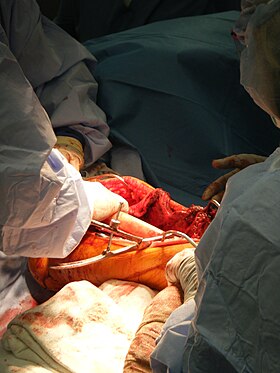Biological Mechanisms of Bone Grafting
- Bone grafting replaces missing bone to repair fractures
- Small or acute fractures can heal without bone grafting
- Large fractures like compound fractures require bone grafting
- Bone grafts can be autologous, allograft, or synthetic
- Most bone grafts are resorbed and replaced as natural bone heals
- Osteoconduction supports tissue ingrowth for bone formation
- Bone graft material serves as a scaffold for new bone growth
- Osteoblasts from the margin of the defect utilize the graft material
- Bioactive chemicals in implants promote osteoconductivity
- Bone graft material should be osteoconductive
- Osteoinduction stimulates osteoprogenitor cells to form new bone
- Bone morphogenetic proteins (BMPs) are osteoinductive cell mediators
- Osteoconductive and osteoinductive graft material promotes faster integration
- Osteoinduction can be enhanced with enamel matrix derivative
- Osteoinduction does not stimulate new bone growth alone
- Osteopromotion enhances osteoinduction without being osteoinductive
- Enamel matrix derivative enhances osteoinductive effect of bone grafts
- Osteopromotion does not stimulate new bone growth alone
- Osteopromotion can be used in combination with other graft materials
- Osteopromotion improves the effectiveness of bone grafting
- Osteogenesis occurs when osteoblasts from graft material contribute to new bone growth
- Autograft tissue and allograft cellular bone matrices support osteogenesis
- Osteogenesis is one of the mechanisms involved in successful bone grafts
- Osteogenesis contributes to bone remodeling
- Osteogenesis does not occur with synthetic graft materials
Types of Bone Allografts
- Fresh or fresh-frozen bone
- Freeze-dried bone allograft (FDBA)
- Demineralised freeze-dried bone allograft (DFDBA)
- Hydroxyapatite-based synthetic grafts
- Calcifying marine algae-based synthetic grafts
Alloplastic Grafts
- Hydroxyapatite-based synthetic grafts
- Bioactive glass-based synthetic grafts
- Polymers like PMMA and PHEMA used as alloplastic grafts
- Alloplastic grafts coated with calcium hydroxide for adhesion
- Fluoro-hydroxy-apatitic (FHA) biomaterial alloplastic bone grafts
Synthetic Variants
- Flexible hydrogel-HA composite with mineral-to-organic matrix ratio similar to human bone
- Ceramics like hydroxyapatite, tricalcium phosphate, and Bioglass used as synthetic grafts
- Doped synthetic grafts with growth factors and ions like strontium
- Synthetic grafts mixed with bone marrow aspirate to increase biological activity
- Similar mechanical properties to bone with lower risk of infection and rejection
Xenografts
- Bone xenografts involve transplanting animal species cells into humans
- Derived from bovine sources like cows or pigs
- Sterilised and processed for safe implantation into human tissue
- Can be freeze-dried or demineralised and deproteinised
- Coral-based xenografts made from calcium carbonate or transformed into hydroxyapatite
Bone grafting is a surgical procedure that replaces missing bone in order to repair bone fractures that are extremely complex, pose a significant health risk to the patient, or fail to heal properly. Some small or acute fractures can be cured without bone grafting, but the risk is greater for large fractures like compound fractures.
| Bone grafting | |
|---|---|
 A surgeon places a bone graft into position during a limb salvage. | |
| ICD-9-CM | 78.0 |
| MeSH | D016025 |
| MedlinePlus | 002963 |
Bone generally has the ability to regenerate completely but requires a very small fracture space or some sort of scaffold to do so. Bone grafts may be autologous (bone harvested from the patient's own body, often from the iliac crest), allograft (cadaveric bone usually obtained from a bone bank), or synthetic (often made of hydroxyapatite or other naturally occurring and biocompatible substances) with similar mechanical properties to bone. Most bone grafts are expected to be resorbed and replaced as the natural bone heals over a few months' time.
The principles involved in successful bone grafts include osteoconduction (guiding the reparative growth of the natural bone), osteoinduction (encouraging undifferentiated cells to become active osteoblasts), and osteogenesis (living bone cells in the graft material contribute to bone remodeling). Osteogenesis only occurs with autograft tissue and allograft cellular bone matrices.